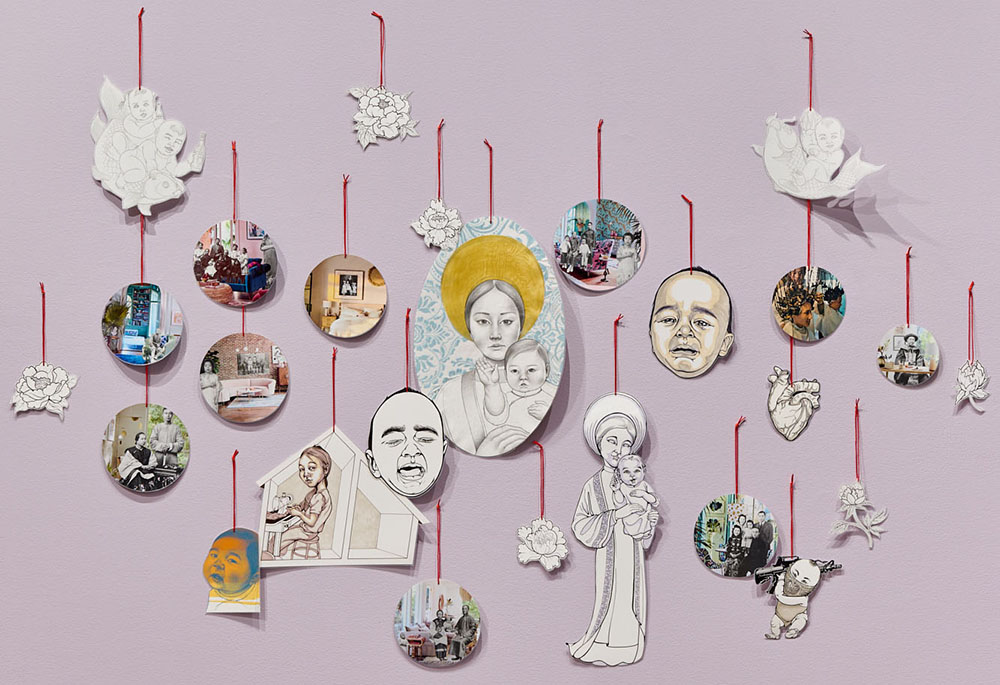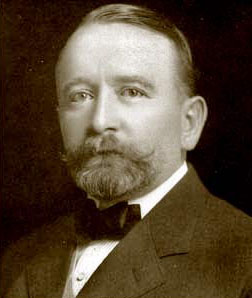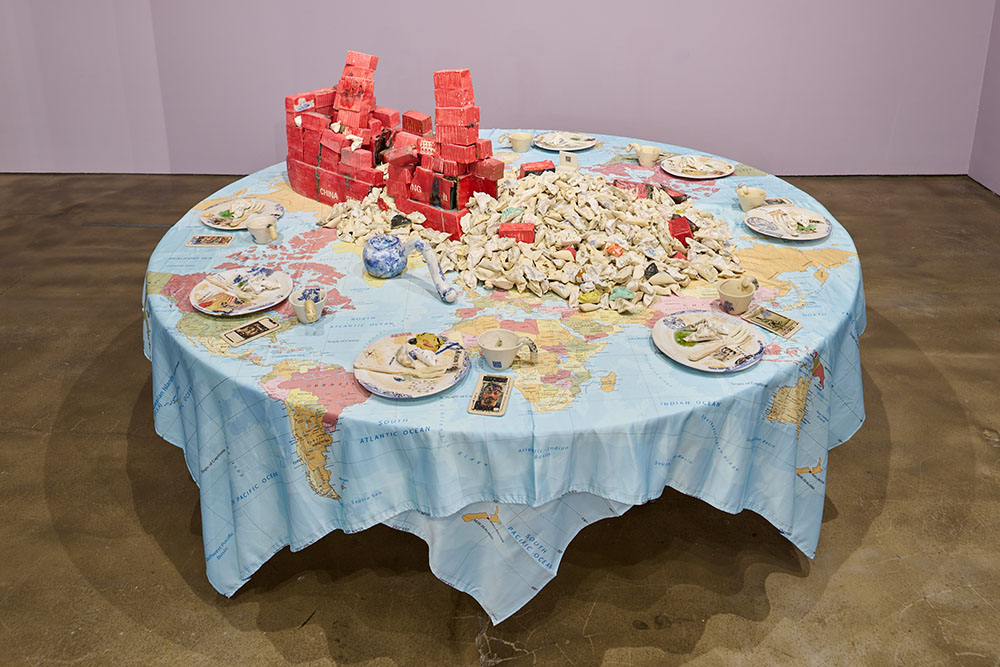by David M. Roth

What is it about American culture that compels each wave of new arrivals to slam the door behind them, blocking entry for those who wish to follow? P L A C E: Reckonings by Asian American Artists, an exhibition at the ICA San José of 12 California artists and three collectives, attempts to address that and a host of other thorny immigration-related issues.
The connecting thread: Besides being of Asian descent, all of the artists involved participated in Montalvo Art Center’s artist-in-residence program, one of the oldest such endeavors in the US. Dating to 1939 (and renamed the Lucas Artists Residency Program in 2004), it operates on an estate at the base of the Santa Cruz Mountains in Saratoga, one of the Bay Area’s wealthiest, most exclusive enclaves.

As you might imagine, the place carries some baggage, notably that of its founder, James Duval Phelan (1861-1930), a former US senator whose campaign slogan, “Keep California White,” failed to win him re-election in 1920. Phelan, as it happened, also endorsed various Asian exclusion acts – a legacy Montalvo’s current curatorial overseers have worked diligently to counteract by offering residencies to more than 1,300 artists, a good many of them artists of color. (The double-spaced exhibition title denotes the space created for those previously excluded.) The exhibition, however, is not about Phelan or his flaws; it’s ostensibly about how Asian Americans perceive, endure and combat inequities arising from the same racist attitudes Phelan promulgated.
Organized by Judy Koong Dennis, Montalvo’s residency program manager, and Zoë Latzer, the ICA’s curator, P L A C E takes its title from Cathy Park Hong’s book, Minor Feelings: An Asian American Reckoning (2020). Chief among the stereotypes Hong seeks to dismantle is that of the “model immigrant.” “Asian Americans,” she writes, “inhabit a purgatorial status: neither white enough nor black enough, unmentioned in most conversations about racial identity. In the popular imagination, Asian Americans are all high-achieving professionals. But in reality, this is the most economically divided group in the country, a tenuous alliance of people with roots from South Asia to East Asia to the Pacific Islands, from tech millionaires to service industry laborers. How do we speak honestly about the Asian American condition—if such a thing exists?”

P L A C E seeks to respond to that “condition” through paintings, sculpture, video and installations. The most accessible – and the funniest — comes from Wanxin Zhang, an SF-based ceramic sculptor. In a nod to Robert Arneson, his Excavated Dumpling Platters 2202 (2023) posits the discovery of a sunken cargo ship 180 years in the future. Its contents, disgorged across seven place settings, include ceramic plates filled with clay dumplings surrounded by penis-handle teacups, the latter a reference to the supposed medicinal benefits of dumplings. The whole setup rests on a tablecloth imprinted with a map of the globe, indicating the worldwide impact of Chinese culture and commerce and the elemental fact that food, an emblem of communal sharing, is where “foreign” and “native” cultures often intersect.

Intersections (real and imagined) played an outsized role in the lives of Bruce and Norman Yonemoto whose father restarted a family flower business in Santa Clara after being imprisoned in Japanese internment camps during WWII. Valley of the Heart’s Delight, as the region was then known, subsequently became Silicon Valley, the heart of America’s military-industrial complex, its orchards and streams bulldozed to make way for industrial parks. The brothers’ video, Silicon Valley (1999), reflects on that loss and what it portends. It shows flowering fruit trees and wind-blown clouds above subdivisions dissolving into scenes of nuclear annihilation, flanked at the bottom by a 1980s-era Apple Macintosh computer. That juxtaposition wrongly blames Apple for fast forwarding the Doomsday Clock. If one were to fault Apple, it would be for its labor practices. In its early days, the company employed thousands of home-based Asian immigrants and paid them poorly, something it got away with because the sheer number of languages spoken made organizing the workforce impossible. Then, it shipped their jobs overseas and engaged in even more egregious cost-cutting practices – in China.

All of which leads us to Stanford University and its white supremacist founder, Leland Stanford, whose financial shenanigans and eugenicist beliefs Malcolm Harris described brilliantly in Palo Alto: a History of California, Capitalism and the World. In it, the Marxist historian reminds us that the first transcontinental railroad connecting Sacramento to Promontory Summit, Utah, was built by Chinese labor at a terrible cost – the lives of three laborers for every two miles of track. Yet Stanford, in his Golden Spike address, delivered on May 10, 1869, failed to acknowledge those sacrifices, and it’s from that infamous speech that the collective Related Tactics (Nathan Watson, Michele Carlson, Weston Teruya) used Stanford’s words (“Who Else But Americans…“) as the title of a 2022 codex that sprawls across the floor like a giant paper accordion. It’s comprised of more than 2,500 images downloaded from the internet at two-mile intervals along the track’s 1912-mile route: one for each life lost. The near-invisibility of the connected photos, which stretch 700 feet unfolded, reflects the anonymity of the estimated 12,000 Chinese who labored in Stanford’s employ. It’s one of the exhibition’s highlights.
Alienation, longing, assimilation and memory loom large in Phung Huyhn’s Americanization (2022). The title is an ironic inversion of “Vietnamization,” Richard Nixon’s attempt to shift prosecution of the “American War” onto local forces, a decision that precipitated South Vietnam’s collapse and the chaos that ensued. The artist’s family was among the thousands that fled, landing first in Michigan, then in LA, both times in Chinese neighborhoods because her parents spoke the language. Consequently, the images employed — contour drawings and photo collages — alternate between Chinese and Vietnamese subjects, depicted in comic, banal or sad states. They hang from a wall by lengths of red ribbon. Some may remind you of the misfits drawn by Barry McGee.

Not everything in P L A C E fares as well as what I’ve just described. Some entries fall flat, others state the obvious, while still others strain the exhibition theme, sometimes to the point of trivializing it. Consider the short shrift given Carlos Villa by Mail Order Brides/MOB (Jenifer K. Wolford, Reanne Estrada, Eliza O. It’s high-camp fun. The artists call it a tribute to their mentor. If so, why is Villa, a legendary figure in Filipino-American art and activism, practically invisible? Then there’s Stephanie Syjuco, an artist who’s carved out a substantial reputation by unearthing and examining artifacts from Philippine history. Several pieces represent her here. Problem is, none deliver the pointed critique of colonialist practices and their extant residues for which she’s justly famous.
To its credit, P L A C E includes artists of many different national origins working in various media. It also includes a separate space, organized by Christine Wong Yap, for visitors to reflect on notions of community and belonging. That, too, is commendable. Actual reckoning? Not so much.
# # #
“P L A C E: Reckonings by Asian American Artists” at ICA San José through August 11, 2024.
About the author: David M. Roth is the editor, publisher and founder of Squarecylinder, where, since 2009, he has published over 400 reviews of Bay Area exhibitions. He was previously a contributor to Artweek and Art Ltd. and senior editor for art and culture at the Sacramento News & Review.